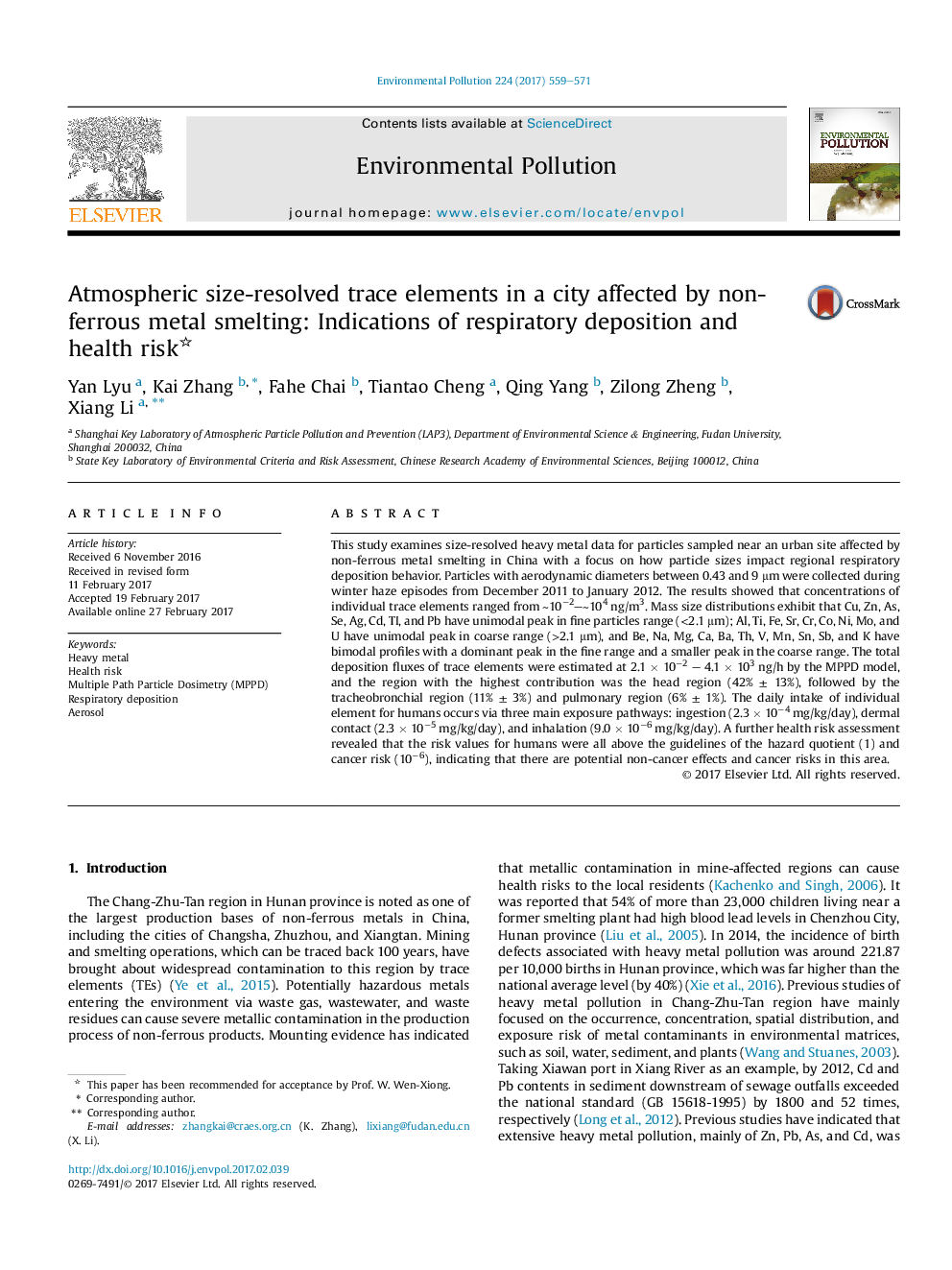| کد مقاله | کد نشریه | سال انتشار | مقاله انگلیسی | نسخه تمام متن |
|---|---|---|---|---|
| 5749413 | 1619149 | 2017 | 13 صفحه PDF | دانلود رایگان |
- Particle-bound trace elements were measured in a city affected by non-ferrous metal smelting during winter haze episodes.
- Regional deposition fluxes of trace elements were size-dependent.
- Fine mode particles contributed the most to inhalation cancer risk.
- Residents living in study sites are subject to potential health risk.
This study examines size-resolved heavy metal data for particles sampled near an urban site affected by non-ferrous metal smelting in China with a focus on how particle sizes impact regional respiratory deposition behavior. Particles with aerodynamic diameters between 0.43 and 9 μm were collected during winter haze episodes from December 2011 to January 2012. The results showed that concentrations of individual trace elements ranged from â¼10â2-â¼104 ng/m3. Mass size distributions exhibit that Cu, Zn, As, Se, Ag, Cd, TI, and Pb have unimodal peak in fine particles range (<2.1 μm); Al, Ti, Fe, Sr, Cr, Co, Ni, Mo, and U have unimodal peak in coarse range (>2.1 μm), and Be, Na, Mg, Ca, Ba, Th, V, Mn, Sn, Sb, and K have bimodal profiles with a dominant peak in the fine range and a smaller peak in the coarse range. The total deposition fluxes of trace elements were estimated at 2.1 Ã 10â2 - 4.1 Ã 103 ng/h by the MPPD model, and the region with the highest contribution was the head region (42% ± 13%), followed by the tracheobronchial region (11% ± 3%) and pulmonary region (6% ± 1%). The daily intake of individual element for humans occurs via three main exposure pathways: ingestion (2.3 Ã 10â4 mg/kg/day), dermal contact (2.3 Ã 10â5 mg/kg/day), and inhalation (9.0 Ã 10â6 mg/kg/day). A further health risk assessment revealed that the risk values for humans were all above the guidelines of the hazard quotient (1) and cancer risk (10â6), indicating that there are potential non-cancer effects and cancer risks in this area.
368
Journal: Environmental Pollution - Volume 224, May 2017, Pages 559-571
